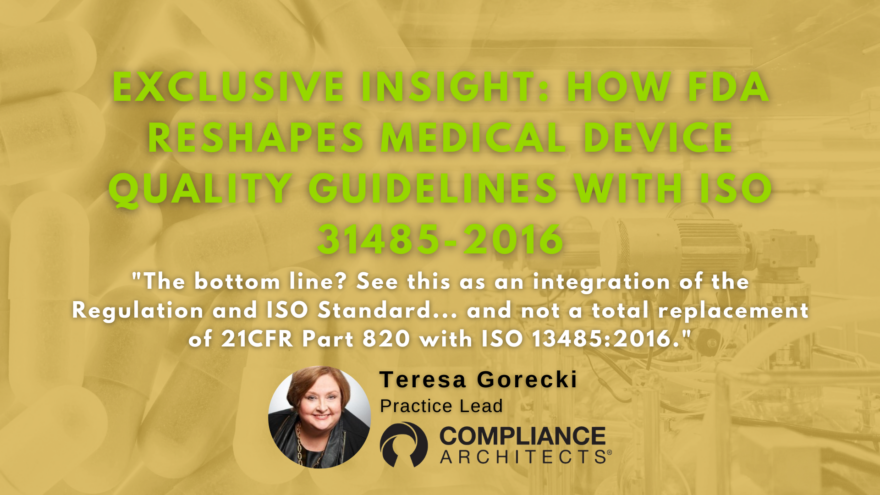The highly anticipated FDA Decision on the Harmonization of the Medical Device Quality System Regulations with ISO 31485-2016 has been released, marking a significant development for the industry. Here are the key highlights and insights into the Final Proposed Rule of the ISO 31485-2016 harmonization.
Highlights of the Proposed Rule
Two-Year Compliance Period
Industry stakeholders have been granted a two-year window for compliance with the new regulations.
Alignment with ISO 13485
The FDA acknowledges the modifications made to ISO 13485 to bring it in closer alignment with the 21 CFR Part 820 Medical Device Quality System Regulation.
Approach Similar to Combination Product Regulations
The regulatory approach mirrors the 21 CFR Part 4 Combination Product Regulations.
Details of the Final Proposed Rule

The Final Proposed Rule emphasizes that the previous Quality System (QS) requirements were similar to ISO 13485. Recognizing this, the FDA is amending Part 820 by incorporating ISO 13485 by reference.
While the rule does not fundamentally alter the pre-existing QS requirements, it introduces additional definitions and provisions to prevent inconsistencies with the FDA’s statutory and regulatory framework. The goal is to simplify and streamline the regulation.
Exceptions have been made where the FDA clarifies concepts or enhances specific clauses in ISO 13485. This confirms that the FDA is not accepting ISO 13485 without any changes.
Guidance for Industry Stakeholders
Industry stakeholders are advised to promptly commence their Quality Management System (QMS) assessment. The recommendation is to identify the areas where 21 CFR Part 820 is more specific than ISO 13485:2016 and vice versa. Integrating these specifics will form the basis for compliance in the U.S. and globally.
ISO 14971 for Medical Device Risk Management is emphasized as a crucial standard not prominently featured in 21 CFR Part 820.
Integration, Not Replacement
The bottom line? See this as an integration of the Regulation and ISO Standard… and not a total replacement of 21CFR Part 820 with ISO 13485:2016.
The FDA’s decision signifies a pivotal moment for the medical device industry. Industry players must navigate the integration process diligently to ensure compliance on both domestic and international fronts. Additionally, it is essential to recognize that Medical Device Regulations in the U.S. are mandatory, emphasizing the need for proactive adaptation.
To delve deeper into the nuances of the FDA’s decision and its impact on the medical device industry, consider attending relevant webinars, workshops or consulting with regulatory experts. You can go to the docket to read background documents or comments received regarding this decision here. Staying informed on updates and engaging with industry forums can provide valuable insights and support during this transitional phase.
Contact Information
For further inquiries or to continue the dialogue, contact Teresa Gorecki at Teresa.Gorecki@compliancearchitects.com or contact Compliance Architects using our form below:
Contact Form
"*" indicates required fields
Note:
This blog post is an informational overview and should not be considered legal advice. Consult with legal professionals specializing in the medical device industry for guidance on compliance and regulatory matters.

